The FV432 was the armoured personnel carrier was developed as part of the FV430 modular series. When production ended by the 1980s, almost 2,500 vehicles were in use making it the bedrock of British motorized infantry units in the cold war. Phased out of service in favour of the Warrior and CVR(T), 500 were upgraded so stay in service in the 2020s. It was announced by the MoD August 2006 that 70 vehicles would be upgraded by BAE Systems to be used in Afghanistan and Iraq in addition to the 54 of the "force protection initiative" (engine upgrade, new steering unit/braking system, better armour protection). So its story is not over, including possible use by the Ukrainians in the present conflict.
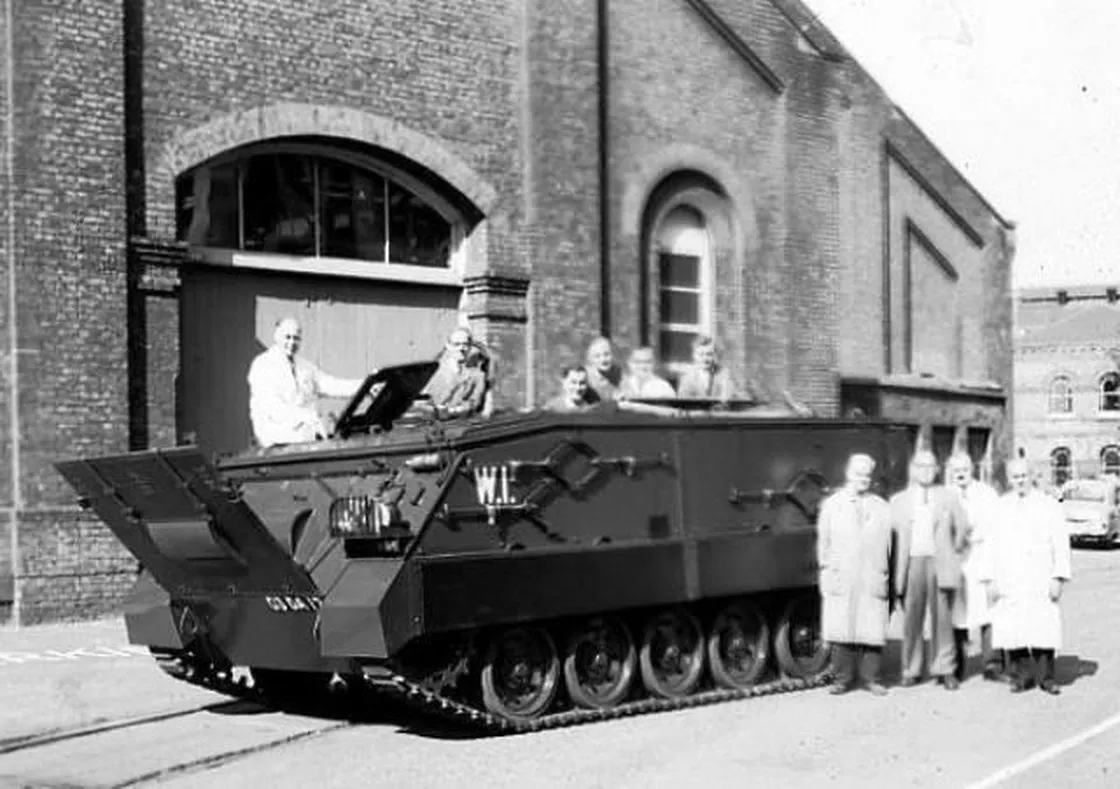
FV 432 of early production at GNK Sankey, credit A. Turner
Instrumental to this development was a new concept developed by the bean counters of the exchequer for the MoD. The later expressed the need for a new famly of armoured vehicles, and the idea was to seek commonality between a large number of platforms, soon cristallized as the Fv430 series of vehicles. The idea was to create a common basis for more modularity, rather than a serie of specific vehicles for specific tasks. This highly modular approach was not new.
After the 1943 Speer reorganization of the production in Germany indeed, it was agreed to create three "basic platforms", light, medium and heavy (waffentrager concept) to be declined into self propelled guns, AA vehicles, tank hunters, conventional turreted tanks and even APCs. The war ended before this program was fully realized. Britain took the same path when designing the Centurion, at the time next in line in the Cruiser tanks lineage after the Comet, but dubbed "universal tank" as it was supposed to replace medium and heavy tanks types in service. The Universal Carrier designed already in 1938, deriving from an interwar serie of tankettes was mass produced during the war and also declined into quantities of variants. In the cash-stripped postwar Britain (the sixties were not tender), the idea of having a modern tracked platforms for multiple uses was resurrected again by the MacMillan Government and fully realized by the Wilson's government.
The FV430 chassis is conventional, tracked, with the engine at the front, driver to the right, hatch commander directly behind him, given a pintle mount for a light machine gun, typically L7 GMPG. The APC and most versions has a side-hinged door at the rear and large split-hatch round opening above the utility/passenger compartment. As customary practice, even the APC lacks firing ports as the troops always dismount to fight. The wading screen forward is standard, and powerplants are generally the same, enabling the vehicles to swim at circa 6 kp/h. As for protection most versions had two three-barrel smoke dischargers, generally forward. Look later in the article to see the variants in more detail. This current post is focusing on the FV432 APC, by far the most numerous, and all variants will be seen separately on their own post in the future.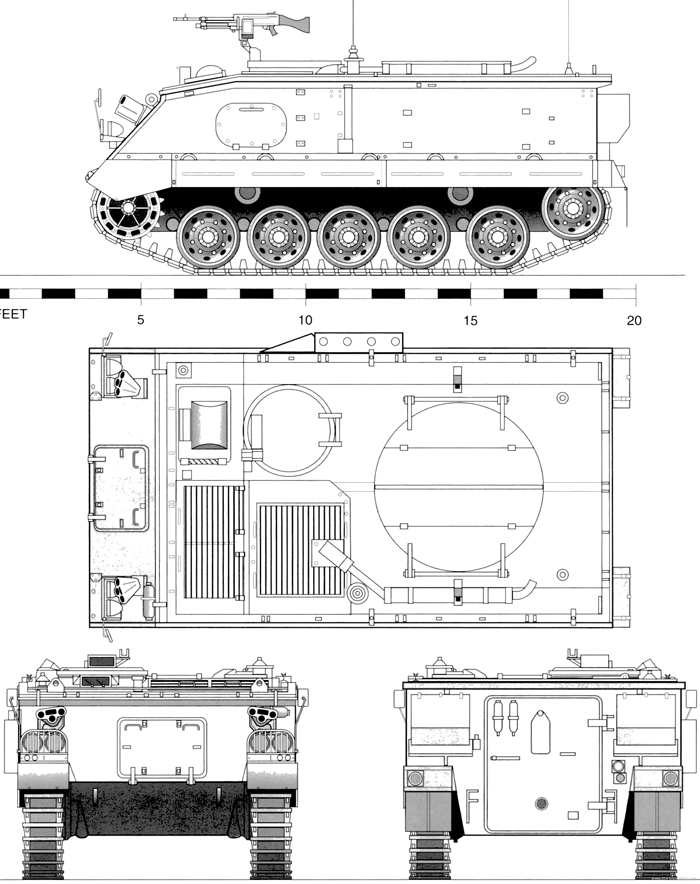
4 view blueprint of the beast.
Following troop trials, the first production batch of FV432 vehicles entered service, in 1963. Production ran until 1971 with over 3,000 vehicles entering service with the British Army. It is assumed given production records that 2,500 were of the 432 model and the remainder, specialized variants (so c500 vehicles).
As a cold war vehicle more modern than the post-war open carriers inspired by WW2 Bren carrier, notably the Cambridge Carrier and Oxford Carrier. Indeed it was completely enclosed, and thus could be proofed against NBC threats (nuclear, biological, chemical) with an overpressure system, full sealing, ventilation by a fan mounted in the forward right hand side (air was drawn through a paper filter mounted externally, right hand side) and distributed by a duct around the interior, at roof level and also in the driver's compartment. Carbon filters were carried in case of gas attack. The vehicle also received heaters and extra air conditioning units for the winter, especially for BAOR vehicles. The vehicle also naturally had a small boiling unit, because 4h tea and welcome soups in Germany's winter... The NBC pressure system relied on a roof-mounted relief valve for constant minimal pressure. There was however no external detector of contamination. Also for active protection the vehicles were equipped with two sets of three smoke dischargers installed on the nose plate, above the lights and blackout lights under protective mesh. The vehicles has no side skirts, RPG protection was very limited, as well as against mines.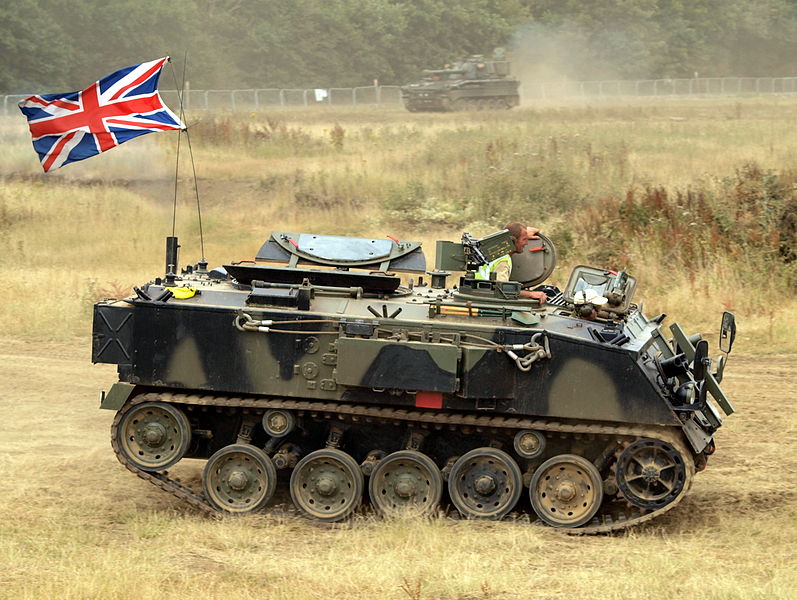
To power the 15 tons APC (for reference the M113 was 10.3t), it was provided with a Rolls-Royce K60 multi-fuel petrol engine, rated for 240 hp (180 kW), procuring a power/weight ratio of 15.7 hp/tonne. It was coupled with a licenced 5+1 gearbox and General Motors Allison Division TX-200-4A semi-automatic transmission. Engineers mounted the complete powerpack with its oil tanks and filters on a common subframe for easly removal and replacement in the field. It also could be reconnected on the ground by extended cables plus fuel lines for testing. The engine compartment's was fire proof by the installation of a FIREWIRE detection system with automatic extinguisher. Transmission via the steering unit at the front used a universally jointed propeller shaft. Access for maintenance was enabled by the glacis plate forward-opening hatch.
The Suspension comprised torsion-bars and 5 single road wheels per side, doubled (single pin track ciculating) rubberized, and a sixth one used as idler and tensioner at the back, front drive sprockets. Top speed was moderate at 52 km/h (32 mph) on flat, down to 30+ kph off-road and its operational range was of 580 km (360 mi) only.
The vehicle was just light enough despite its limited buoyancy to be amphibious, and it had the "usual suspect" to ford any water surface with minimal preparations: Wading screens, trim vane as standard and an extension provided which elevated the exhaust pipe. Five minutes were needed to prepare the vehicle and when swimming it had a water speed of 6 km/h, propelled by its tracks. However with time and weight upgrade, this capability was discontinued. Many heavier variants were specified not amphibious, and in that case they still can ford circa one meter (3 feer) of water. Needless to say the much heavier Bulldog is in no way amphibious. As for tactical transport it could only fit in US heavy duty transports at the time, excluding the British C130 Hercules, and was too heavy to be paradropped.
It should be noted that the FV432 was not exported. The Australian Army evaluated two pre-production vehicles in 1962-1963 but adopted the M113 as trials in Queensland desmonstrated much better performance, as well as a roomier interior. It seems that surplus vehicles were sold to the Indian Army in the 1980s. They served only for a short time and inspired the Government to order their own APC, the APC-70.
A contract to upgrade 500 was signed by November 2005, delivering the first by July 2006 and the rate reached 20 vehicles converted per month over 2.5 years, set to 31 August 2006 for the first batch of 50 and later another of 70 more was signed with additional armour protection. Thales Land & Joint Systems proposed the Local Situational Awareness System tested in 2005, coupled with the Battlegroup Thermal Imaging System and SWARM Overhead Weapon Station (OWS) for the active threat detection all around.
Experience in Iraq led to the fitting of an ERA package front and sides against HEAT RPG-7 charges and more passive armour was added to the upper part of the suspension. The air conditioning system and thermal blanket are brand new as well as a reworked "Ned Kelly" commander's position and ECM system to defeat IEDs, plus a 7.62 mm overhead weapon system (OVS, not the same as RWS). After final deliveries in 2008 the program was terminated.
-Carriage for WOMBAT recoiless rifle. It carried this armament internally, with ramps and hand winch to deploy and recover it. Later mounted internally, traverse 30° lateral, +7.5° −3° elevation, or dismounted.
-Cargo carrier, up to 3,600 kgs payload, prototype only.
-Artillery SpotterThe Royal Artillery used a modified version for specialised roles in artillery fire control and observation (FOV).
-Ground surveillance vehicle (radar kit)
-Command vehicle: 2 mapboards, extra communication equipment and 3.66 × 2.74 × 1.98 m canvas "penthouse", crew of 7 for 15,500 kg.
-Mortar carrier: BAE Land Systems 81 mm L16 mortar (earlier models in the 1970s) in the opened rear, on turntable for full traverse (max range 5,660 m, supply 160 mortar bombs, crew of 6, weight 16,400 kg, six per armoured infantry battalion.
-Ambulance with 4 stretchers/2 stretcher and 5 seated patients, unarmed.
-Recovery vehicle, not the same as the maintenance FV 434 vehicle. A PTO winch wirth high/low speed gears was just installed in the rear troop compartment with conversion kits supplied by the British Rail Derby Locomotive Works, from 1972. Max pull (three part tackle): 18,299 kg. Maximum winching speeds 18.34 m/min at 6,608 kg, 122.4 m/min at 3,050 kg.
-84mm Carl Gustav Recoiless Rifle variant (mounted on a bar across the troop compartment.
-Barmine layer Vehicle The Royal Engineer's tractor for the Barmine layer, laying anti-tank mines at 600/h. Replaced by the Volcano system/
-Giant Viper vehicle Royal Engineer's tractor for the Giant Viper mine clearance trailer, replaced later by the Python.
-Milan ATGM variant Carried fittings to mount the Milan ATGM. No more information.
-Sonic detection variant No more information.
-IFV test model with 30mm RARDEN Scimitar turret, at least two built and tested, demonstrated for export.
-OPFOR vehicles: Opposition Forces vehicles used in exercizes, modified like with the 30 mm RARDEN turret fitted with mock-up Russian Kolomna KBM 9K11 Malyutka ATGW to mimick the BMP-2. Another mimicked the ZSU-23-4 SPAAG.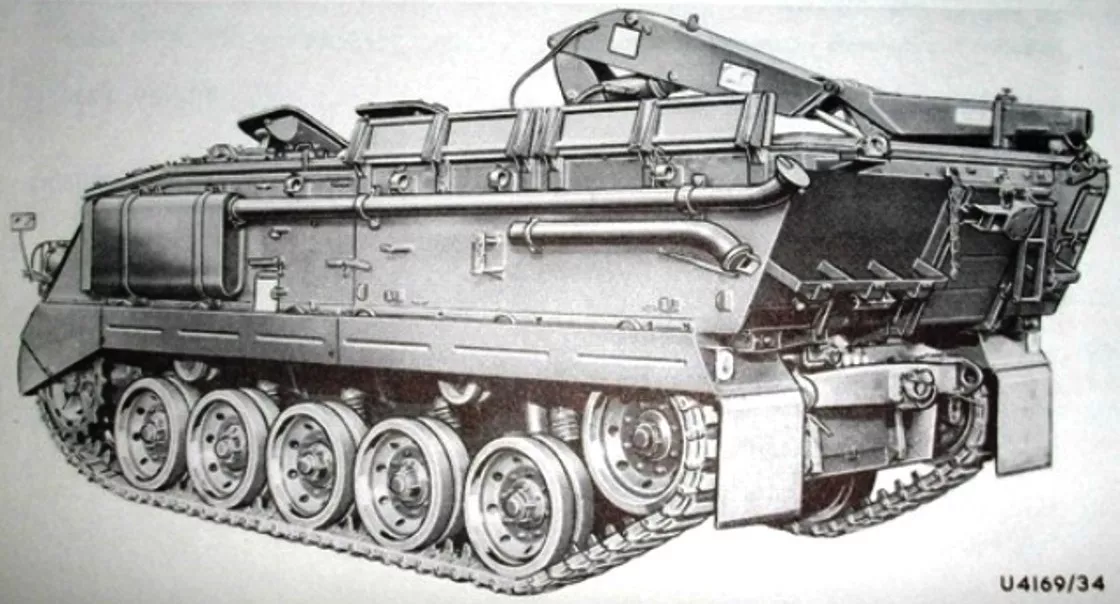
This was a REME (Royal Electrical and Mechanical Engineers) maintenance carrier, crew of four, hydraulically driven crane (lifting capacity 3,050 kg at 2.26 m radius). The right side HIAB crane could lift also 1,250 kg at 3.96 m radius. Its suspension can be locked when to avoid the vehicle moving when lifting a load at any angle. Crew of four, weight 17,750 kg fully loaded. Introduced in the 1960s primarily to change the Chieftain's powerpack in the field, it is still used by the REME for the same task, ported to the Challenger and variants of the Chieftain.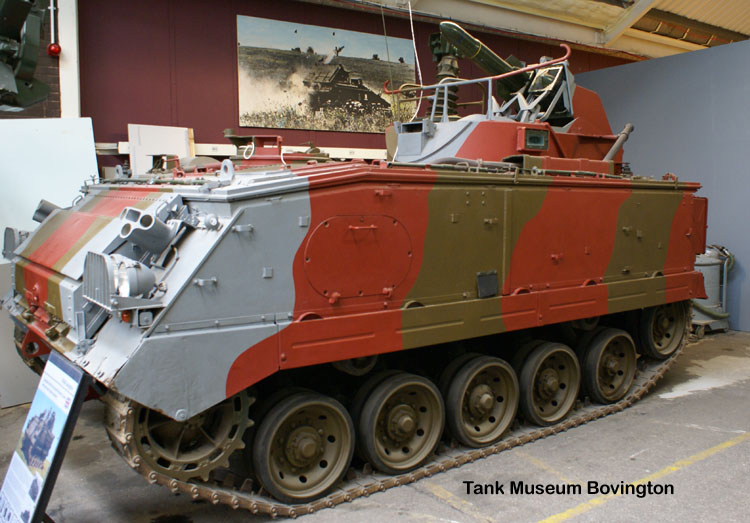
Guided missile launcher anti-tank variant. Although two variants of the FV432 were modified to operate the Carl Gustav and Milan ATGM and bring to motorized infantry units an organic anti-tank capability, the specifics of the British Swingfire missile urged the creation of a truly dedicated platform. The vehicle was modified with two firing bins, storage for fourteen missiles, reloaded from inside. A control unit could be deployed at a rmote location with better observation point, aiming and firing the missiles from up to 100 metres away. That way, the vehicle could stay completely hidden from view. The Swingfire was indeed capable of a 90° turn after firing. This version appeared in the 1970s, and served also with the Royal Armoured Corps. They ended in four independent Royal Horse Artillery batteries, for each Armoured Division of the BAOR. The organizationw as changed again in 1984, the vehicle is no longer operational, and often compared to the more modern FV102 Striker.
Many variants. The vehicle was named PTARMIGAN. It had a large boxy structure on the left, and cable rollers on the other side, plus extra equipments at the back as well as a snorkel. No more information, this section is in research. It seems there were three variations including the Triffid/Radio Relay with subtle differencies between Radio Relay range.
Ex-Indian FV 432. It inspired the APC-70
So far, only Ukraine recently received the FV 432 Mark 3 Bulldog, the latest upgraded variant. The British government provides (its still ongoing) an unspecified number of FV432 Mark 3 Bulldogs to the Ukrainian Army, but few photos surfaced of its use.
The first true active combat deployment was in Iraq, and thanks to about 50 upgraded Mark III Bulldogs which had little to do with the earlier versions. Still, the vehicle was vulnerable to IEDs and mines. The last retirement was planned for 2022, but the Britis Government decided to pass them to Ukraine. Classified numbers, we could assume around 40 out of the 50 initially procured due to refurbishement costs, wear out, and lack of parts.
hmvf.co.uk/t
militaryfactory.com
thinkdefence.co.uk
britmodeller.com
en.wikipedia.org
FV430_series
Development: The FV430 family

FV 432 of early production at GNK Sankey, credit A. Turner
Instrumental to this development was a new concept developed by the bean counters of the exchequer for the MoD. The later expressed the need for a new famly of armoured vehicles, and the idea was to seek commonality between a large number of platforms, soon cristallized as the Fv430 series of vehicles. The idea was to create a common basis for more modularity, rather than a serie of specific vehicles for specific tasks. This highly modular approach was not new.
After the 1943 Speer reorganization of the production in Germany indeed, it was agreed to create three "basic platforms", light, medium and heavy (waffentrager concept) to be declined into self propelled guns, AA vehicles, tank hunters, conventional turreted tanks and even APCs. The war ended before this program was fully realized. Britain took the same path when designing the Centurion, at the time next in line in the Cruiser tanks lineage after the Comet, but dubbed "universal tank" as it was supposed to replace medium and heavy tanks types in service. The Universal Carrier designed already in 1938, deriving from an interwar serie of tankettes was mass produced during the war and also declined into quantities of variants. In the cash-stripped postwar Britain (the sixties were not tender), the idea of having a modern tracked platforms for multiple uses was resurrected again by the MacMillan Government and fully realized by the Wilson's government.
The FV430 chassis is conventional, tracked, with the engine at the front, driver to the right, hatch commander directly behind him, given a pintle mount for a light machine gun, typically L7 GMPG. The APC and most versions has a side-hinged door at the rear and large split-hatch round opening above the utility/passenger compartment. As customary practice, even the APC lacks firing ports as the troops always dismount to fight. The wading screen forward is standard, and powerplants are generally the same, enabling the vehicles to swim at circa 6 kp/h. As for protection most versions had two three-barrel smoke dischargers, generally forward. Look later in the article to see the variants in more detail. This current post is focusing on the FV432 APC, by far the most numerous, and all variants will be seen separately on their own post in the future.
Design of the FV432

4 view blueprint of the beast.
Design Development
The FV 432 was to be the flagship of the serie, studied from 1957 under Mac Millan I and II and Sir Alec Douglas-Home's cabinets. The basic idea was to have a family of cheap, mass-produced vehicles than can provide mobility in an NBC environment and protect its crew against artillery fragments. The basic APC was a simple battle taxi, providing sufficient mobility to the infantry until its get to the disembarkation point. Even armed support was an afterthought. In 1961 specifications were made, and the same year, it was proposed to the Trojan car company (a way to save the company near bankrupcy) but this proved unrealistic given the amount of investments needed. In 1962 GNK Sankey came out with the best proposition and a production contract was signed the same year.Following troop trials, the first production batch of FV432 vehicles entered service, in 1963. Production ran until 1971 with over 3,000 vehicles entering service with the British Army. It is assumed given production records that 2,500 were of the 432 model and the remainder, specialized variants (so c500 vehicles).
Protection
The FV432 was a boxy, low profile vehicle with all-steel construction, welded. It has the engine at the front, driver to the right, commander behind, single side-hinged door for loading and unloading, no firing ports and a capacity of five seats on either side, foldable to free the flatbed for 3,670 kg of cargo. This gave the vehicle a 2+10 capacity, a driver, commander/support gunner and a platoon. Other than that, armour protection is assumed to be 8 mm (0.3 in) all around, and 12 mm (0.5 in) on the nose to protect against small arms fire and shrapnel. Also there is an inner spall liner blocking residual internal bullet hit chards. The rear hinged door had a vision port. Over the troop compartment's roof was placed a single circular hatch cover, opening to the left and right while being hinged in the middle.As a cold war vehicle more modern than the post-war open carriers inspired by WW2 Bren carrier, notably the Cambridge Carrier and Oxford Carrier. Indeed it was completely enclosed, and thus could be proofed against NBC threats (nuclear, biological, chemical) with an overpressure system, full sealing, ventilation by a fan mounted in the forward right hand side (air was drawn through a paper filter mounted externally, right hand side) and distributed by a duct around the interior, at roof level and also in the driver's compartment. Carbon filters were carried in case of gas attack. The vehicle also received heaters and extra air conditioning units for the winter, especially for BAOR vehicles. The vehicle also naturally had a small boiling unit, because 4h tea and welcome soups in Germany's winter... The NBC pressure system relied on a roof-mounted relief valve for constant minimal pressure. There was however no external detector of contamination. Also for active protection the vehicles were equipped with two sets of three smoke dischargers installed on the nose plate, above the lights and blackout lights under protective mesh. The vehicles has no side skirts, RPG protection was very limited, as well as against mines.
Mobility

To power the 15 tons APC (for reference the M113 was 10.3t), it was provided with a Rolls-Royce K60 multi-fuel petrol engine, rated for 240 hp (180 kW), procuring a power/weight ratio of 15.7 hp/tonne. It was coupled with a licenced 5+1 gearbox and General Motors Allison Division TX-200-4A semi-automatic transmission. Engineers mounted the complete powerpack with its oil tanks and filters on a common subframe for easly removal and replacement in the field. It also could be reconnected on the ground by extended cables plus fuel lines for testing. The engine compartment's was fire proof by the installation of a FIREWIRE detection system with automatic extinguisher. Transmission via the steering unit at the front used a universally jointed propeller shaft. Access for maintenance was enabled by the glacis plate forward-opening hatch.
The Suspension comprised torsion-bars and 5 single road wheels per side, doubled (single pin track ciculating) rubberized, and a sixth one used as idler and tensioner at the back, front drive sprockets. Top speed was moderate at 52 km/h (32 mph) on flat, down to 30+ kph off-road and its operational range was of 580 km (360 mi) only.
The vehicle was just light enough despite its limited buoyancy to be amphibious, and it had the "usual suspect" to ford any water surface with minimal preparations: Wading screens, trim vane as standard and an extension provided which elevated the exhaust pipe. Five minutes were needed to prepare the vehicle and when swimming it had a water speed of 6 km/h, propelled by its tracks. However with time and weight upgrade, this capability was discontinued. Many heavier variants were specified not amphibious, and in that case they still can ford circa one meter (3 feer) of water. Needless to say the much heavier Bulldog is in no way amphibious. As for tactical transport it could only fit in US heavy duty transports at the time, excluding the British C130 Hercules, and was too heavy to be paradropped.
Armament
FV432s received a standard-issue pintle-mounted L7 GPMG (General Purpose), and some have it on the Peak Engineering turret in infantry unit. It was placed on the commander position. Royal Artillery as well as Royal Engineers and Royal Signals vehicles originally had the L4A4 Bren light machine gun, later swapped for the GPMG. In all cases, they carried several belts of ammunitions totalling 1,600 rounds, including tracers. With the previous Bren LMG, this was 1,400 rounds in 50 magazines (28 rounds each). The two three-barrel smoke dischargers forward could in some cases used as offensive weapons, when loaded with anti-infantry grenades instead of smoke ones.It should be noted that the FV432 was not exported. The Australian Army evaluated two pre-production vehicles in 1962-1963 but adopted the M113 as trials in Queensland desmonstrated much better performance, as well as a roomier interior. It seems that surplus vehicles were sold to the Indian Army in the 1980s. They served only for a short time and inspired the Government to order their own APC, the APC-70.
FV432 Variants
FV 432 Mark 1 and 1/1
First production models were the Mk 1, described here. The 1/1 minor variant had a modified RR petrol engine.FV 432 Mark 2 & 2/1
Essentially the same vehicle but with a new Rolls-Royce K60 multi-fuel engine. The Mark 2/1 has its NBC pack flush with the hull side.FV 432 Mark 3
The Late production vehicles were distinguished by the NBC pack on the right side, almost flush against the hull. It was protruding on earlier vehicles. But there was a flurry of modifications as well: Change of drive train, braking and steering system to meet European regulations. From 2002 BAE Systems Land Systems showcased a demonstrator in July 2002 powered by a Cummins Engine Company B-series 6-cylinder turbocharged diesel rated for 250 hp, EURO II compatible, coupled with an Allison X200-4C fully automatic, electronically controlled transmission shared by the M113A3 APC. There is also a new cooling system, 74 km/h top speed, greater acceleration and range. The driver received a Warrior type yoke. Lightened by 500 kgs, it could receive additional armour. The vehicle underwent trials at the Bovington test center followed by a modified prototype with improved damper suspension by Horstmann Defence Systems.A contract to upgrade 500 was signed by November 2005, delivering the first by July 2006 and the rate reached 20 vehicles converted per month over 2.5 years, set to 31 August 2006 for the first batch of 50 and later another of 70 more was signed with additional armour protection. Thales Land & Joint Systems proposed the Local Situational Awareness System tested in 2005, coupled with the Battlegroup Thermal Imaging System and SWARM Overhead Weapon Station (OWS) for the active threat detection all around.
Experience in Iraq led to the fitting of an ERA package front and sides against HEAT RPG-7 charges and more passive armour was added to the upper part of the suspension. The air conditioning system and thermal blanket are brand new as well as a reworked "Ned Kelly" commander's position and ECM system to defeat IEDs, plus a 7.62 mm overhead weapon system (OVS, not the same as RWS). After final deliveries in 2008 the program was terminated.
Sub-variants
The FV432 itself was to be specialized in many tasks, role-specific:-Carriage for WOMBAT recoiless rifle. It carried this armament internally, with ramps and hand winch to deploy and recover it. Later mounted internally, traverse 30° lateral, +7.5° −3° elevation, or dismounted.
-Cargo carrier, up to 3,600 kgs payload, prototype only.
-Artillery SpotterThe Royal Artillery used a modified version for specialised roles in artillery fire control and observation (FOV).
-Ground surveillance vehicle (radar kit)
-Command vehicle: 2 mapboards, extra communication equipment and 3.66 × 2.74 × 1.98 m canvas "penthouse", crew of 7 for 15,500 kg.
-Mortar carrier: BAE Land Systems 81 mm L16 mortar (earlier models in the 1970s) in the opened rear, on turntable for full traverse (max range 5,660 m, supply 160 mortar bombs, crew of 6, weight 16,400 kg, six per armoured infantry battalion.
-Ambulance with 4 stretchers/2 stretcher and 5 seated patients, unarmed.
-Recovery vehicle, not the same as the maintenance FV 434 vehicle. A PTO winch wirth high/low speed gears was just installed in the rear troop compartment with conversion kits supplied by the British Rail Derby Locomotive Works, from 1972. Max pull (three part tackle): 18,299 kg. Maximum winching speeds 18.34 m/min at 6,608 kg, 122.4 m/min at 3,050 kg.
-84mm Carl Gustav Recoiless Rifle variant (mounted on a bar across the troop compartment.
-Barmine layer Vehicle The Royal Engineer's tractor for the Barmine layer, laying anti-tank mines at 600/h. Replaced by the Volcano system/
-Giant Viper vehicle Royal Engineer's tractor for the Giant Viper mine clearance trailer, replaced later by the Python.
-Milan ATGM variant Carried fittings to mount the Milan ATGM. No more information.
-Sonic detection variant No more information.
-IFV test model with 30mm RARDEN Scimitar turret, at least two built and tested, demonstrated for export.
-OPFOR vehicles: Opposition Forces vehicles used in exercizes, modified like with the 30 mm RARDEN turret fitted with mock-up Russian Kolomna KBM 9K11 Malyutka ATGW to mimick the BMP-2. Another mimicked the ZSU-23-4 SPAAG.
Variants of the FV430 family
FV431 Armoured load carrier
Single prototype produced, not adopted, losing to the 6x6 Alvis Stalwart selected instead.FV432 Armoured Personnel Carrier
Current Armoured Personal Carrier Version. Built from 1963 onwards by GNK Sankey to c2500 vehicles.FV433 Field Artillery, Self-Propelled "Abbot"
105 mm self propelled gun built by Vickers. 234 made. See the tank encyclopedia article.FV434 "Carrier, Maintenance, Full Tracked"

This was a REME (Royal Electrical and Mechanical Engineers) maintenance carrier, crew of four, hydraulically driven crane (lifting capacity 3,050 kg at 2.26 m radius). The right side HIAB crane could lift also 1,250 kg at 3.96 m radius. Its suspension can be locked when to avoid the vehicle moving when lifting a load at any angle. Crew of four, weight 17,750 kg fully loaded. Introduced in the 1960s primarily to change the Chieftain's powerpack in the field, it is still used by the REME for the same task, ported to the Challenger and variants of the Chieftain.
FV435 Wavell communications vehicle
pic Largely based on the FV 432 vehicle this was a speciality variant, the first being modified from retired Swingfire vehicles, fitted with a massive structure aft anf having side hatches, and back plate cable roller. It carried the Wavell Automatic Data Processing (ADP) system to assist formation HQs in command and control functions. It was recognisable by the numerous masts and antennae, fitted with a wide variety of signals equipment. Used by the 206 signal Sqn. Received preformatted reports and returned data on a green vector screen. It used 12.5 floppy disks and was quite slow to operate. They were very slow vehicles, circa 25 mph on flat, clunky, with torsion bars rapidly worning out and overheating computer. Not a success overall, the 43 vehicles produced were discarded in the early 1990s.FV436 Command and control
As the name suggests, a few were organic as HQ vehicles for platoons. They had the same Rolls-Royce K60 Multi fuel engine and often a top cage, amber light, single rear door, and carried a set of tent poles and pegs for its awning, when posted in the field. It was to be fitted at first with the Green Archer radar, but this never happened and instead, some received later the Cymbeline radar.FV437 Pathfinder vehicle
This prototype was based on the FV432, with integral buoyancy, waterjets, snorkel, and other differences. It never arrived to production stage.FV438 Swingfire

Guided missile launcher anti-tank variant. Although two variants of the FV432 were modified to operate the Carl Gustav and Milan ATGM and bring to motorized infantry units an organic anti-tank capability, the specifics of the British Swingfire missile urged the creation of a truly dedicated platform. The vehicle was modified with two firing bins, storage for fourteen missiles, reloaded from inside. A control unit could be deployed at a rmote location with better observation point, aiming and firing the missiles from up to 100 metres away. That way, the vehicle could stay completely hidden from view. The Swingfire was indeed capable of a 90° turn after firing. This version appeared in the 1970s, and served also with the Royal Armoured Corps. They ended in four independent Royal Horse Artillery batteries, for each Armoured Division of the BAOR. The organizationw as changed again in 1984, the vehicle is no longer operational, and often compared to the more modern FV102 Striker.
FV439 Signals vehicle

Many variants. The vehicle was named PTARMIGAN. It had a large boxy structure on the left, and cable rollers on the other side, plus extra equipments at the back as well as a snorkel. No more information, this section is in research. It seems there were three variations including the Triffid/Radio Relay with subtle differencies between Radio Relay range.
FV430 Mk3 Bulldog
Upgraded troop carrier which saw its combat debut in Iraq by August 2007. Note he vehicle was not a FV 432 but had a unique nomenclature to mark its specificities. Introduced in December 2006, it came to meet an urgent operational requirement for counter-insurgency in Iraq and Afghanistan. Old FV 430 vehicles were refurbished, receive a kit of applique reactive armour package by Rafael, able to defeat RPGs. It also had a new powerpack for greater performances and alleviate the weight of the new armour, and reinforced steering gear for extra agility, air conditioning and remote gun station. The program planned initialy a conversion of 900 vehicles teaming with the Mastiff PPV/Pinzgauer, as the Warrior fleet was already committed. However a batch of 50 units was modified at ABRO, Dorset between January and October 2006 (£85 million), seeing Operation Telic as tehey were and completed in the field, while BAE Systems Land Systems vehicles later were sent to six Battalion Royal Electrical and Mechanical Engineers.Export

Ex-Indian FV 432. It inspired the APC-70
So far, only Ukraine recently received the FV 432 Mark 3 Bulldog, the latest upgraded variant. The British government provides (its still ongoing) an unspecified number of FV432 Mark 3 Bulldogs to the Ukrainian Army, but few photos surfaced of its use.
The FV430 in action
The FV 430 entered service in four main infantry divisions of the British Army, and was the bulk of armored transport used by the Army of the Rhine (BAOR) until its gradual replacement in the late 1970s and early 1980s. In UK it was already replaced by the 6x6 Saracen, much faster. The vehicle never really was successful or popular. Many found it overweight or underpowered, and somewhat unreliable, and in addition it was cramped, and suffered much in comparison to the taller but faster and lighter M113. The Saracen was replaced in 1988 by the Warrior, a return to the tracked formula. Many shortcomings of the FV 432 were digested and invested on the Warrior, closer to the Bradley than the M113. The BaE Mark III was also tested by the US in 2006, Portugal and Denmark, but no order followed.The first true active combat deployment was in Iraq, and thanks to about 50 upgraded Mark III Bulldogs which had little to do with the earlier versions. Still, the vehicle was vulnerable to IEDs and mines. The last retirement was planned for 2022, but the Britis Government decided to pass them to Ukraine. Classified numbers, we could assume around 40 out of the 50 initially procured due to refurbishement costs, wear out, and lack of parts.
Sources/Links
army-guide.com/hmvf.co.uk/t
militaryfactory.com
thinkdefence.co.uk
britmodeller.com
en.wikipedia.org
FV430_series
FV 432 specifications | |
| Dimensions | 5.25 x 2.55 x 2.28 m (17 ft 3 in x 8 ft 4 in x 7 ft 6 in) |
| Total weight, battle ready | 15 long tons (15.3t) |
| Crew | 2 (driver, commander)+10 troops |
| Propulsion | Rolls-Royce K60 multi-fuel 240 hp (180 kW) pw 15.7 hp/tonne |
| Suspension | torsion-bar, 5 road wheels, 4 return rollers |
| Speed (road) | 52 km/h (32 mph) |
| Range | 580 km (360 mi) |
| Armament | 7.62 mm L7 General Purpose Machine Gun |
| Armor | 12.7 mm max (0.5 in) |
| Total | 2500 |
Gallery
Profiles renditions
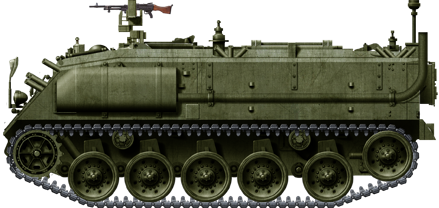
Basic APC
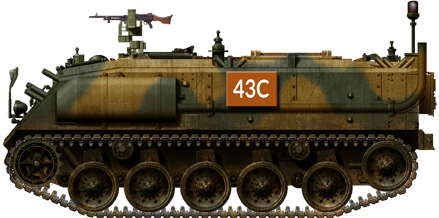
BAOR vehicle
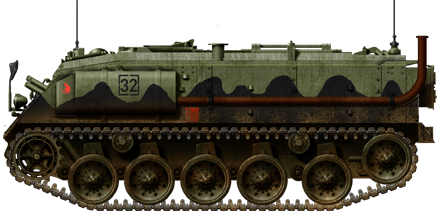
BAOR vehicle
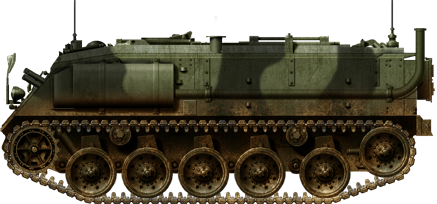
Other camouflaged vehicle stationed in UK
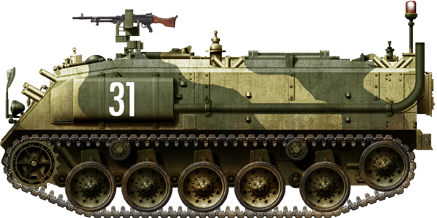
Mk2/1 vehicle
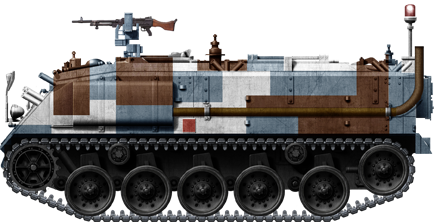
Mk2/1, BAOR "Berlin Camouflage"
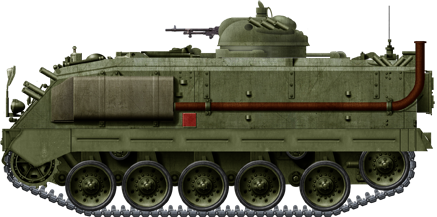
Fb432 Turret V
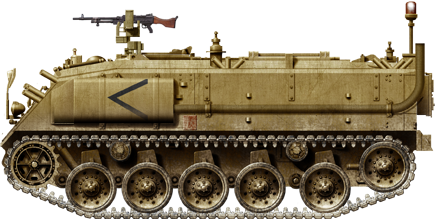
Mk2/1 in the gulf war, 1991
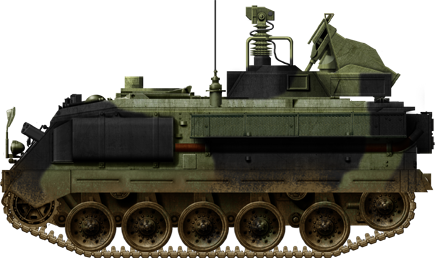
Derivative antitank vehicle: Mk438 Swingfire
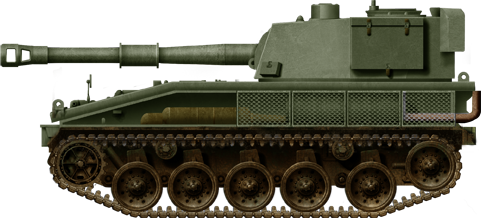
Derivative SPH: Fv 433 Abott
Photos
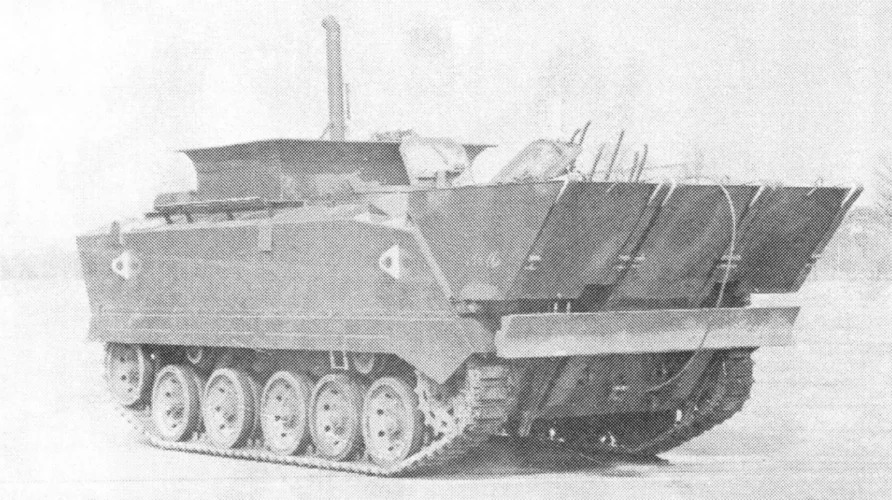
FV 437 Pathfinder Recovery Vehicle
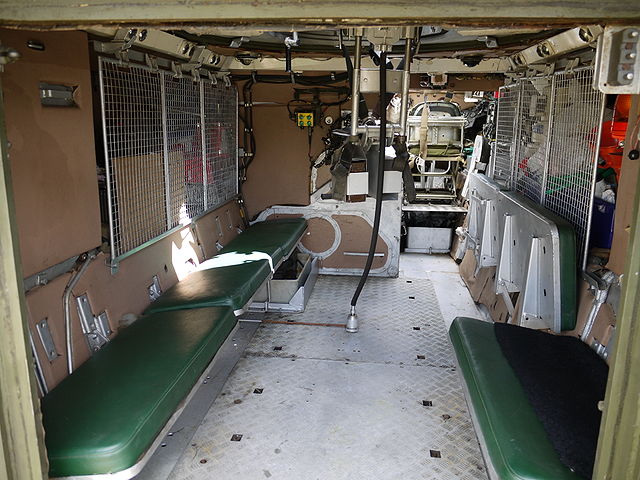
Interior of the troops compartment
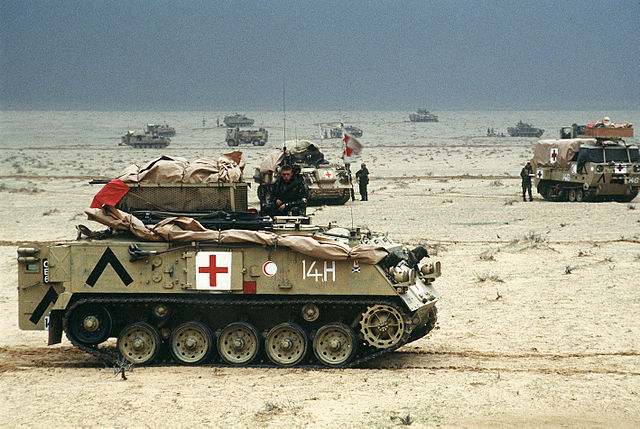
Ambulance version of the 7th Brigade Royal Scots

FV 432 of the 7th Brigade Royal Scots
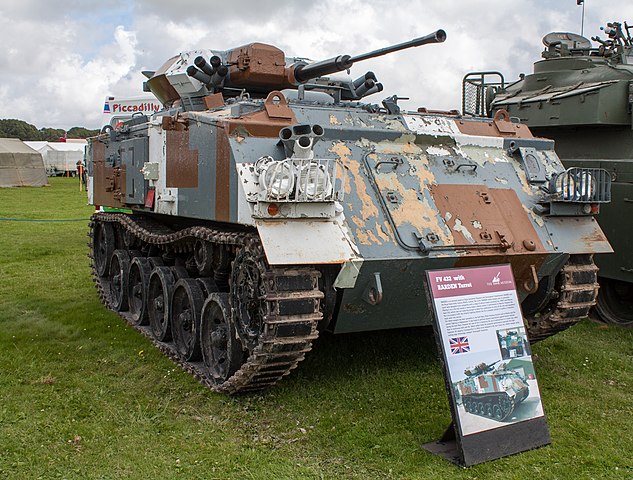
FV 432 of the BAOR wit the "Berlin Camouflage"
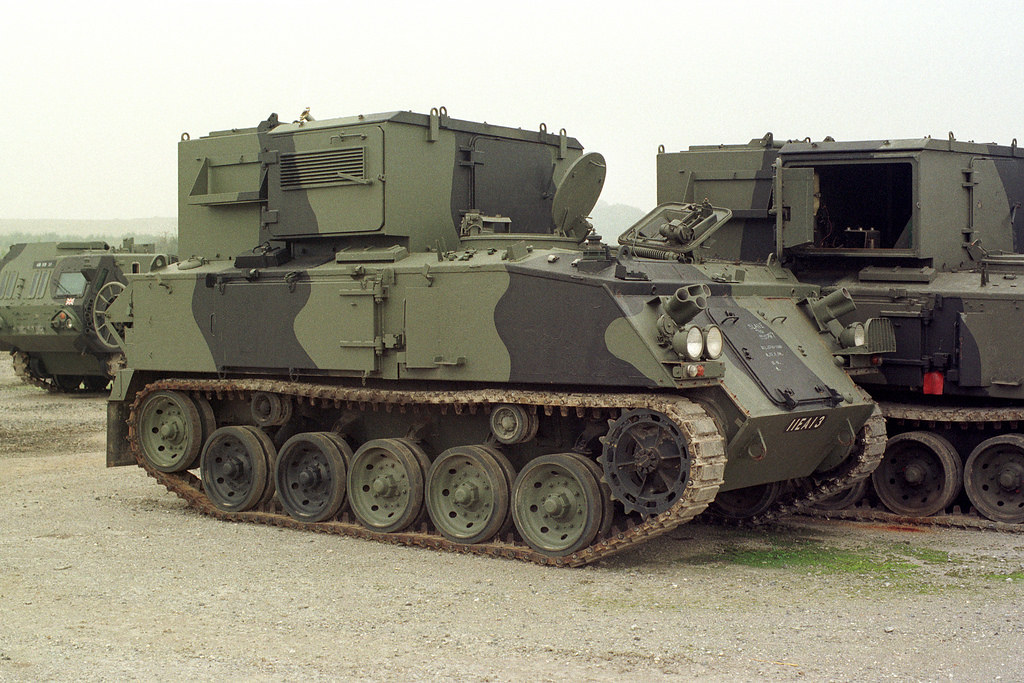
FV 435 Wavell Communication Vehicle
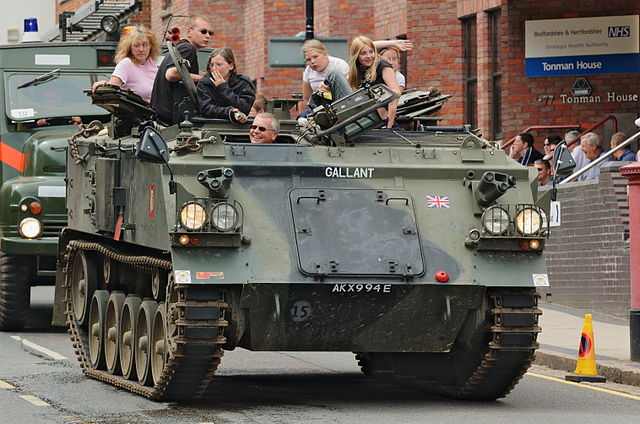
FV 432 a the St Albans Procession in 2005
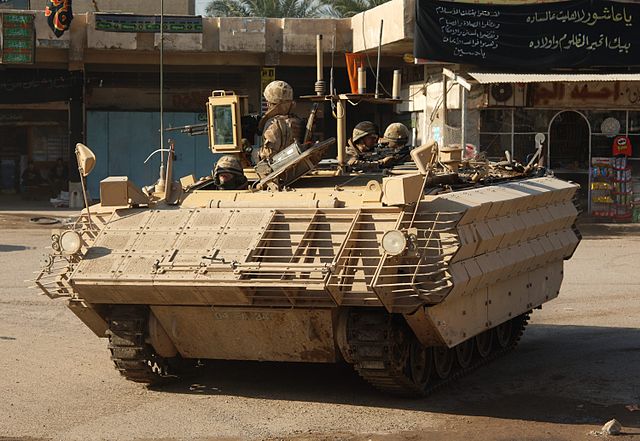
First delivery of the Mark III Bulldog in Iraq
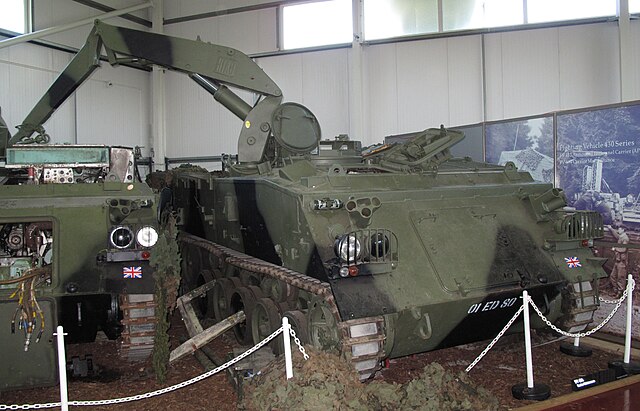
FV 434 Maintenance Vehicle
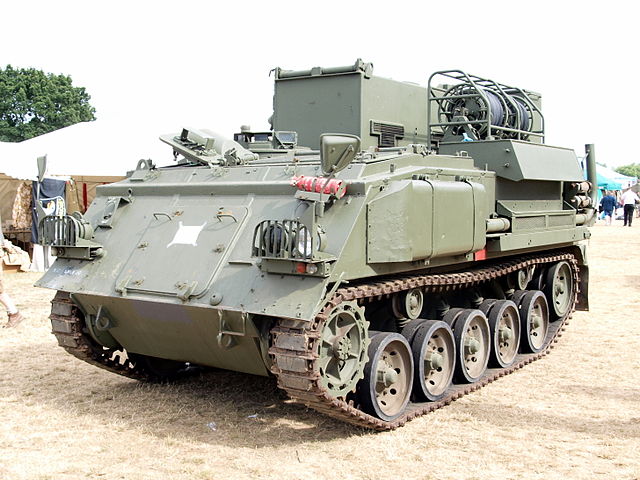
FV 439 Ptarmigan

With 30 mm Rarden Turret
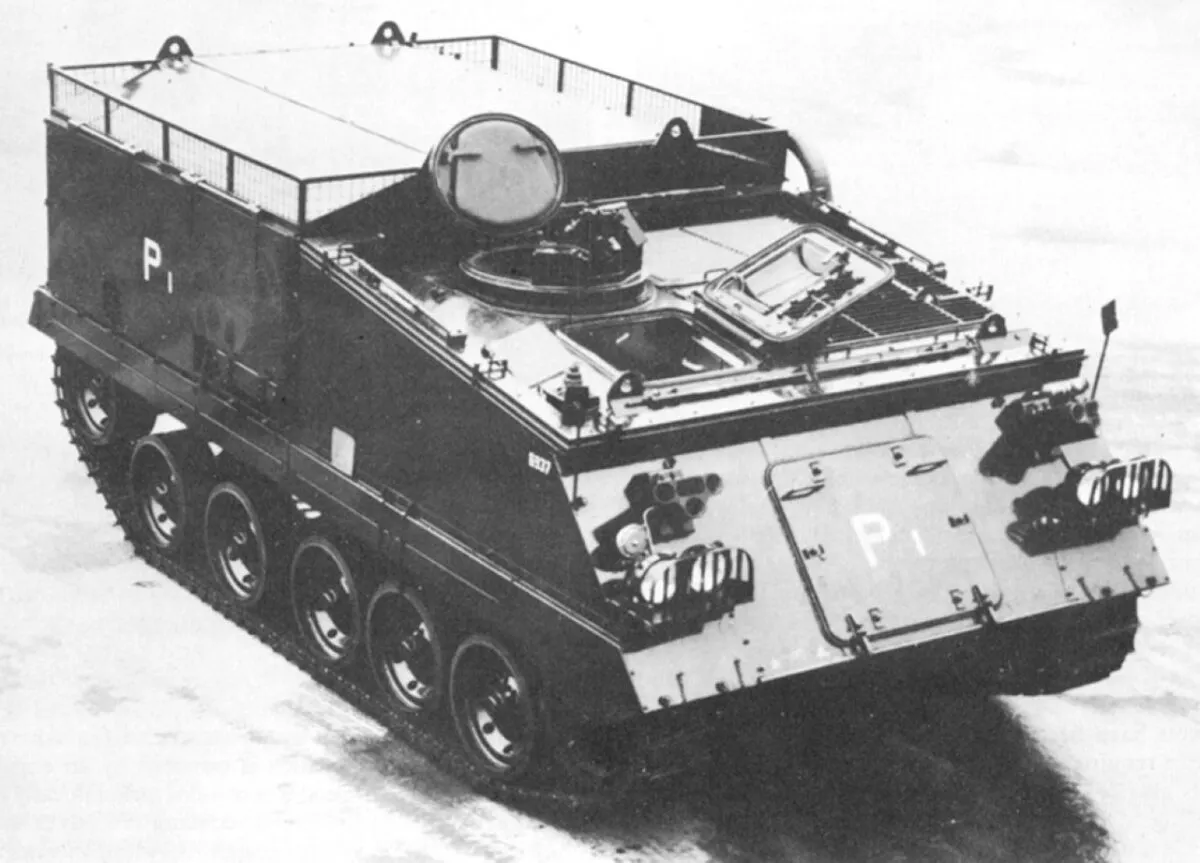
FV 431 Load Carrier Prototype
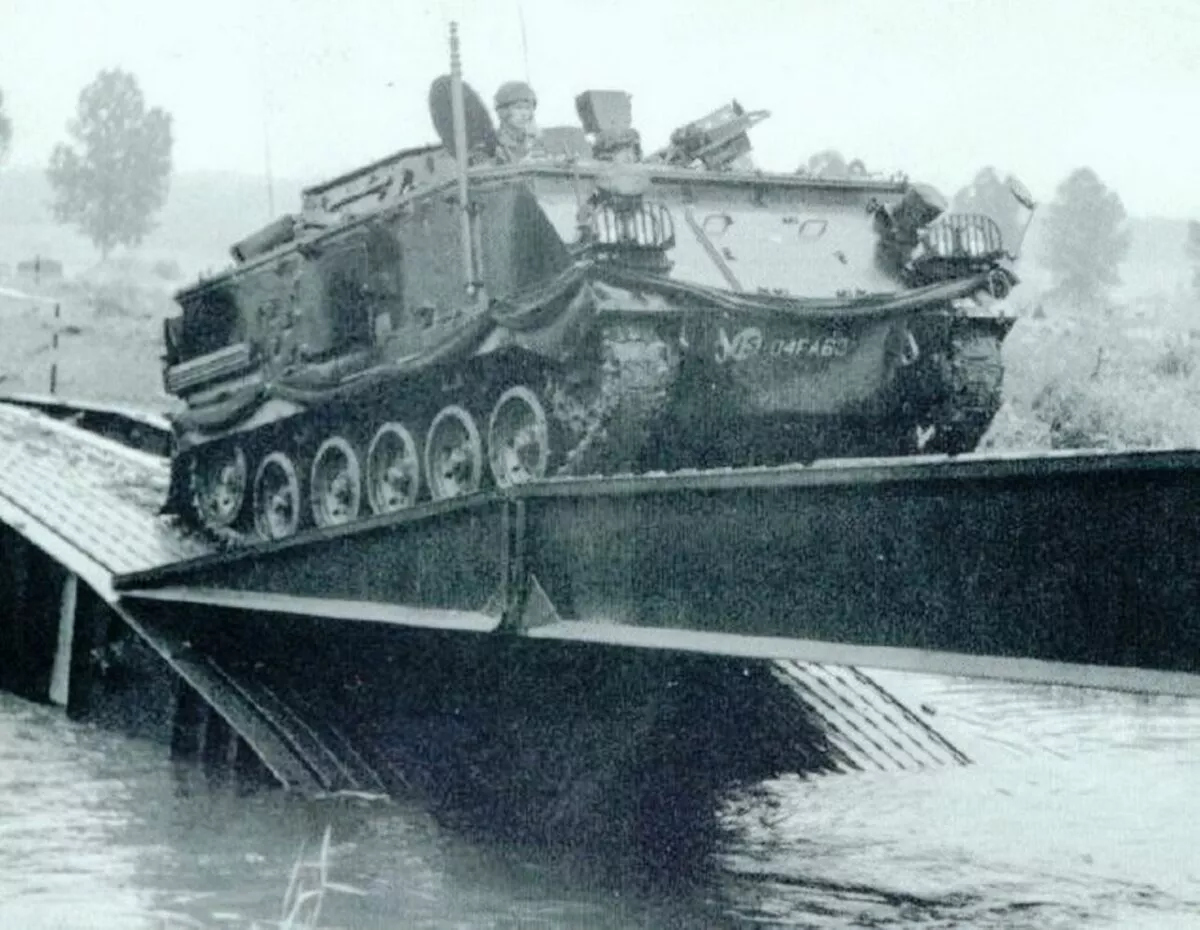
FV 439 signals vehicle

Cold War Tanks


































Cold war tanks posters

Cold War Main Battle Tanks

Cold War Soviet Army
Museums, Movies, Books & Games
The Tanks and Armor in pop culture
Tanks and armored vehicles in general are only really grasped when seen first person: The mass, the scale, it's all there. Explore also the way tanks were covered in the movie industry, in books and in video games.Movies:
Best tanks movie on warhistoryonline.com
On imdb.com
On bestsimilar.com/
miltours.com
liveabout.com/
watchmojo.com
Video Games:
pcgamesn.com
historyhit.com
levvvel.com
vg247.com/best-tank-games
mmobomb.com/
alienwarearena.com

